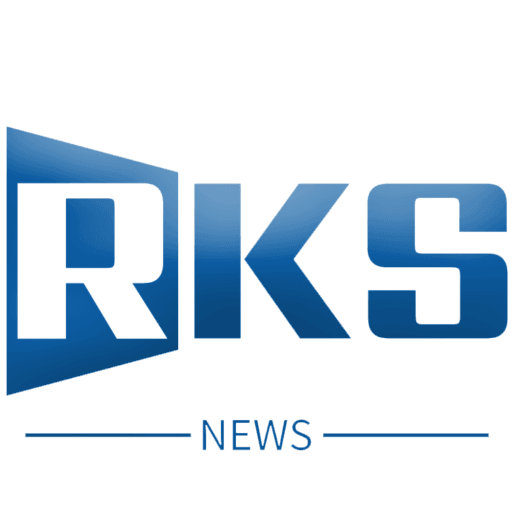Serbian War Crimes
The lack of evidence in official Serbian documents regarding ethnic cleansing in Kosovo, the destruction of libraries, cultural heritage, and the legal preparation of the country for a lawsuit against Serbia were discussed on the first day of the scientific conference titled “Scale, Heritage, Documentation, and Judgment of Crimes Committed in Kosovo.”
The crimes committed by Serbia against the population are only one aspect of the war, and Kosovo has not been able to document them even 25 years later. Even less is known about the crimes committed against culture and cultural heritage. The conference “Scale, Heritage, Documentation, and Judgment of Crimes Committed in Kosovo” aims to overturn this narrative of lack of systematic documentation with the help of international scholars. Apart from the efforts to prove genocide, the first day of the conference also discussed evidence of the destruction of libraries and monuments. The destruction of 1.7 million Albanian-language books is just one of the statistics mentioned.
Kosovo has failed to systematically document the crimes committed by the Serbian regime during the last war, and the lawsuit against Serbia for these crimes is still not on the horizon, as the newest country in Europe does not yet have the right to reach such a level.
The topics discussed on the first day of the conference “Scale, Heritage, Documentation, and Judgment of Crimes Committed in Kosovo” included the lack of evidence in official Serbian documents regarding ethnic cleansing in Kosovo, the destruction of libraries, the destruction of cultural heritage, and Kosovo’s legal preparation for a lawsuit against Serbia. Organized by the Institute for War Crimes Committed During the War in Kosovo, participants discussed crimes and evidence in various fields.
The first day, with three panels, was dedicated to the topic “Crimes Committed During the War in Kosovo.”
Destruction of Culture Through Libraries
At the amphitheater of the Ali Hadri Institute of History, Oslo-based scholar Chandler Williams presented his research on Serbian attacks on Kosovo’s libraries before and during the recent war. He explained that in 1991, Albanians were expelled from the country’s main library, which is now the National Library of Kosovo. That same year, according to him, the regime began collecting books to destroy them, and public libraries were closed. He presented data showing that 12,000 kilograms of Albanian-language newspapers collected in libraries were destroyed.
“In 1994, many libraries were closed and turned into Serbian cafes,” Williams said. Regarding the years of the war, he stated that half of these institutions were attacked. According to him, these actions had clear objectives because the aim was not just to erase an entire culture but also to target these institutions as the archive of the culture of the ethnic groups living in that state.
“Destroying libraries destroys the possibility of coexistence and erases a culture,” he stated.
Hiding Traces of the “Patko Plan” of Genocide
Historian Christian Costamagna from New Europe College discussed the deportation of Albanians from Kosovo and the difficulties of documenting it through Serbian documents. He talked about what is known as the Patko Plan. Through this plan, activated by Slobodan Milošević after NATO’s bombing of Serbian targets, around one million Albanians were deported from Kosovo. What is known about this plan is that it was uncovered by the Bulgarian Secret Service, and Germany was notified about it.
“There should be a copy in Berlin, and one in Sofia, but it was never made public,” he said. He also mentioned that there are records of a meeting on October 4, 1998, where Milo Đukanović, then leader of Montenegro, stated that the Yugoslav Army was committing crimes.
“There have been some public statements about the deportation of the population, but the documents are missing. Maybe it is better to reconstruct what happened and prove it in the absence of documents,” he added. He further stated that based on discussions about the Patko Plan, there were genocidal attempts.
“If we look at what has been said about that plan, there are elements of genocide, but we haven’t seen it,” Costamagna said.
Regarding genocide, university professor Arsim Bajrami stated that there was indeed genocide in Kosovo, but it is difficult to argue it.
“This state was born on the basis of genocide,” he stated. He recalled being part of Kosovo’s delegation in the Rambouillet talks, where the Kosovar side signed the agreement proposed by international mediators, while Serbia refused. Later, on March 24, NATO bombings would begin. Bajrami recalled meeting with Wesley Clark, NATO’s commander from 1997 to 2000.
“Clark explained the Patko Plan to us because he knew it well,” he said. According to him, this was a genocidal plan. He addressed international participants, stating that if NATO had not intervened in Kosovo, only 25% of the Albanian population would have survived and would have become slaves. He mentioned that more than 100,000 people were killed, and only 10% of them were members of the Kosovo Liberation Army.
“The target of the Serbian forces was not the KLA but the civilian population,” Bajrami said. He added that Serbian hatred toward Albanians was greater than toward any other ethnic group in the region. Albanians suffered greatly from systematic violence, including sexual violence.
Rudinë Jakupi from the University of Dublin focused on sexual violence during the recent war in Kosovo. She stated that for a decade after the war, institutions remained silent about this issue, and there was also stigma surrounding it. She mentioned that data indicates around 20,000 women were sexually assaulted.
1784 Monuments Destroyed, 3724 Artifacts Stolen
On Tuesday, Serbian crimes in Kosovo were also analyzed from a cultural perspective. Mathias Holvoet from the University of Amsterdam stated that there is a clear attempt at cultural genocide, as evidenced by the destruction of religious buildings.
“We have crimes against humanity but not genocide in the terms in which genocide is explained,” he stated.
Meanwhile, the head of the Cultural Heritage Without Borders Kosovo Foundation, CHwB Kosovo, discussed Kosovo’s approach to documenting crimes against cultural heritage.
“We have failed to document crimes against cultural heritage,” he said at the outset. He mentioned a case in a village where the owner of a destroyed monument said he had to completely clear the space so that an international organization could build him a 75-square-meter house. Shoshi also mentioned that before the recent war, there were 425 protected monuments on the list, most of them medieval, with the intention of presenting the country’s cultural heritage as more Serbian, while monuments representing Albanians were neglected.
“During the war, over a thousand buildings were destroyed, and the focus was on reconstruction, not documenting the crimes,” he said. He cited the reconstruction of the Gjakova and Peja bazaars as major examples where no documentation was done.
Shoshi was part of the State Commission for the research, registration, inventory, evaluation, and documentation of cultural and historical objects destroyed during the 1998-1999 war.
“We drafted a report, but we failed fundamentally: in gathering evidence. We did ‘desk research,’” he said. According to him, most traces have already been erased. In September of last year, this report was handed over to the Institute for War Crimes Committed During the War in Kosovo. According to the report, during the war, 1,784 monuments were destroyed, 3,724 artifacts were stolen, 175 libraries were destroyed, 1.7 million Albanian books were destroyed, tens of thousands of archival documents were stolen, and hundreds of works of art were damaged or stolen.
The international conference, which was officially opened on the 17th anniversary of Kosovo’s independence, will continue its work today (Wednesday).







